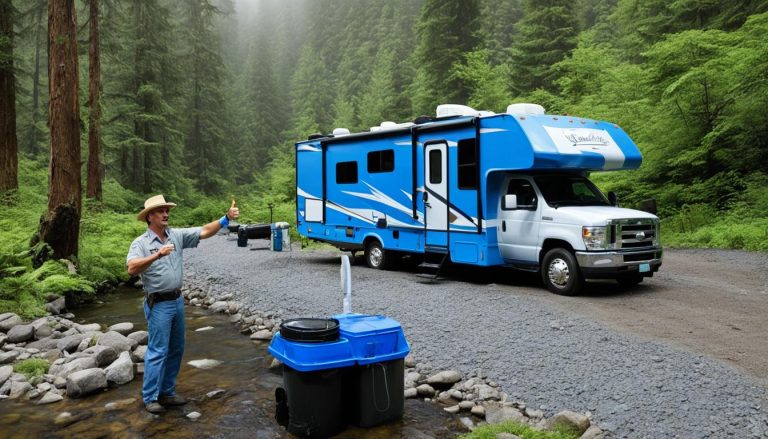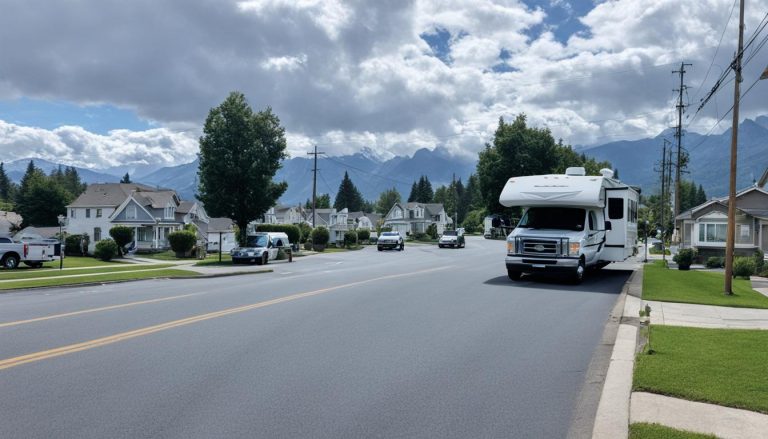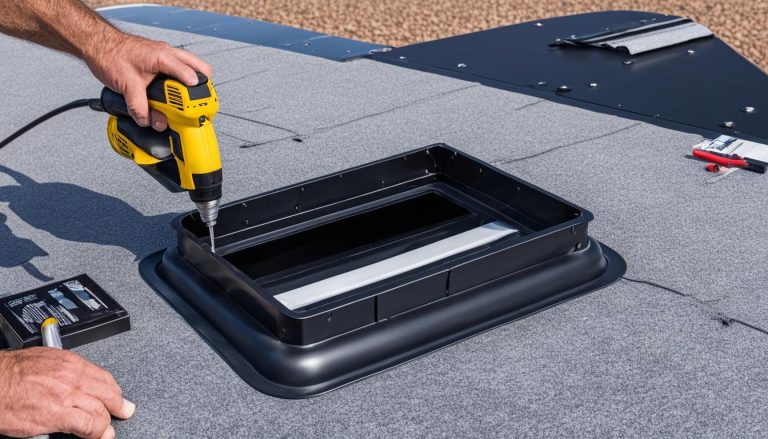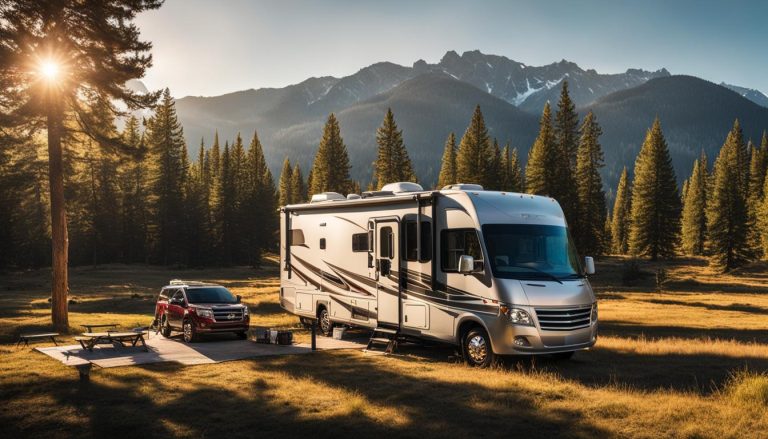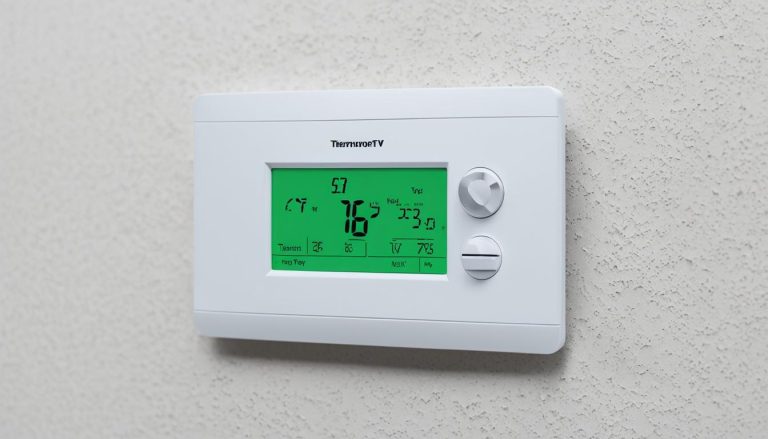Start Your Own RV Park: Essential Tips & Steps
gorvlifestyle.com and its partners may earn a commission if you purchase a product through one of our links
Thinking about starting your own RV park? It’s a lucrative business venture that can provide a steady income stream. However, it also requires careful planning, preparation, and a solid understanding of the industry. In this guide, we’ll walk you through the essential tips and steps to help you start and run a successful RV park. From research and business planning to land acquisition, permits, development, and marketing strategies, we’ll cover it all.
Key Takeaways:
- Research the RV park industry to gain critical knowledge and insights.
- Create a comprehensive business plan to secure funding and make informed decisions.
- Acquire the right land, permits, and insurance for your RV park.
- Develop the land according to your business plan and hire a skilled personnel team.
- Implement effective marketing strategies to attract customers and ensure the park’s success.
The Difference Between RV and Mobile Home Parks
RV parks and mobile home parks serve different purposes and cater to distinct clientele. Understanding the differences between these two types of parks is essential for anyone considering venturing into the park development business.
RV parks are primarily designed for short-term stays and high turnover, attracting camping enthusiasts and road travelers. These parks offer a range of amenities to attract guests and enhance their camping experience. Amenities may include:
- Full hookups for water, electricity, and sewage
- Restrooms and shower facilities
- Campfire pits or picnic areas
- Laundry facilities
- Recreational activities such as swimming pools, playgrounds, or sports courts
Mobile home parks, on the other hand, cater to long-term residents and offer tenancy at will or long-term leases. These parks typically provide ground leases for tenants to develop their own small plots. Mobile home parks may offer the following amenities:
- Utility connections for electricity, gas, and water
- On-site management or maintenance staff
- Community gathering areas or shared spaces
- Landscaping and common area maintenance
The development and operational costs for mobile home parks are generally lower compared to RV parks due to fewer amenities provided. However, the return on investment may be more stable and predictable in mobile home parks due to long-term lease agreements.
Comparison of RV Parks and Mobile Home Parks
| Aspect | RV Parks | Mobile Home Parks |
|---|---|---|
| Target clientele | Camping enthusiasts and road travelers | Long-term residents |
| Stay duration | Short-term | Long-term |
| Main amenities | Full hookups, restrooms, recreational activities | Utility connections, on-site management |
| Development costs | Higher due to additional amenities | Lower |
| Operational costs | Higher due to ongoing maintenance and amenities | Lower |
Understanding the differences between RV parks and mobile home parks will help you determine which type of park aligns with your business goals and target market. Consider factors such as location, potential revenue streams, and investment requirements to make an informed decision.
How to Start an RV Park: 6 Steps
Starting an RV park involves six main steps. First, thorough research is necessary to understand the industry and gain critical knowledge. A well-designed business plan is crucial for securing funding and making informed decisions. The next step is acquiring the right land, obtaining necessary permits and insurance. Developing the land according to the business plan is essential to bring the park to life. Hiring a well-trained personnel team is crucial for providing excellent customer service and maintaining the park. Finally, effective marketing strategies are necessary to attract customers and make the RV park successful.
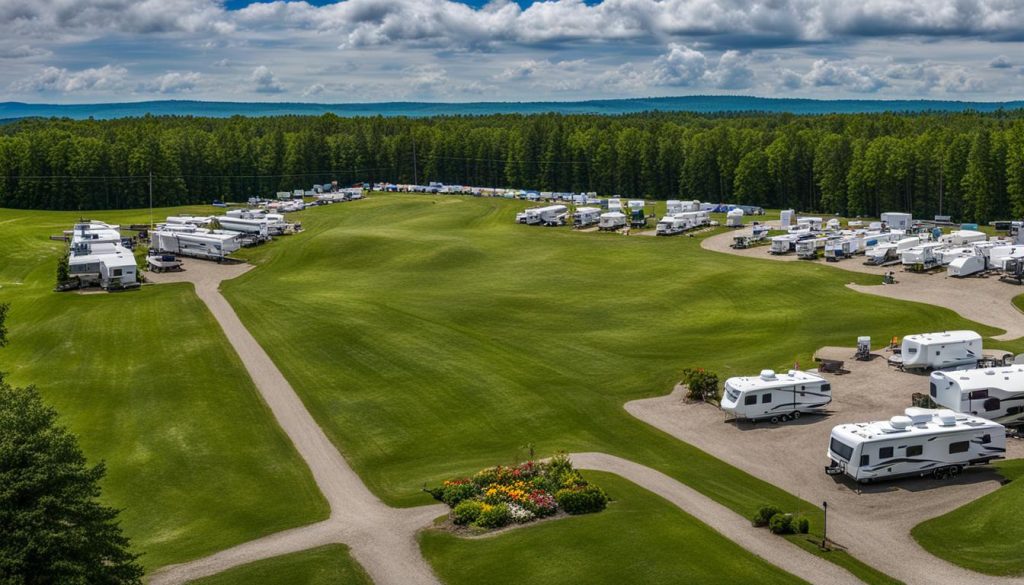
| Step | Description |
|---|---|
| 1 | Thorough Research |
| 2 | Business Plan Design |
| 3 | Land Acquisition and Permits |
| 4 | Development |
| 5 | Personnel Hiring |
| 6 | Marketing Strategies |
The 5 Parts of Creating Your RV Park Business Plan
A comprehensive RV park business plan consists of five main parts:
- Financial Projections: Providing investors with assurance of a profitable return on investment is crucial. Include projected revenue, expenses, and cash flow statements.
- Competitive Analysis: Conducting a thorough analysis helps identify strengths and weaknesses compared to competitors. Evaluate their pricing, amenities, target market, marketing strategies, and customer reviews.
- RV Industry Statistics: Including industry statistics demonstrates the stability and growth potential of the RV industry. Highlight key trends, market size, and the demand for RV parks.
- Tenant Leasing Agreements: Showcase the various lease options available to potential tenants. Detail terms, rates, and length of stay options. Rental agreements should be clear and fair to both parties.
- Amenities: Highlighting the amenities your RV park offers sets it apart from competitors and justifies higher pricing. Include amenities like private campsites, recreational facilities, Wi-Fi access, laundry services, and pet-friendly accommodations.
Creating a comprehensive business plan that covers these aspects will help attract investors, secure financing, and guide the successful establishment and growth of your RV park.
How Much Does It Cost to Start an RV Park?
Starting an RV park involves several cost considerations. It’s important to understand the expenses involved in establishing your own RV park to ensure financial planning and success. Let’s explore the different components that contribute to the startup costs:
Land Purchase:
The first significant expense you’ll encounter is the cost of purchasing land for your RV park. The price of land can vary significantly depending on location and other factors. On average, you can expect to spend anywhere from $4,000 to $200,000 per acre. Consider the desirability and accessibility of the location when estimating land purchase costs.
Development Costs:
After acquiring the land, development costs come into play. These include plotting the land, obtaining permits, and covering essential building expenses. Developing the land according to your business plan is crucial to bring your RV park to life. The total development costs will depend on the size and complexity of your project, as well as any unique features or amenities you plan to include.
Building RV Sites:
The cost of building RV sites is another significant factor to consider. RV sites need to be equipped with amenities such as electricity and water hookups to accommodate guests. The more amenities and comforts you offer, the higher the building costs will be. On average, building RV sites can range from $10,000 to $30,000 per site.
Septic System Cost:
One of the most costly items to consider when starting an RV park is the septic system. Installing a proper septic system is essential to handle the waste generated by RVs. The cost of installing a septic system can range from $500 to $60,000, depending on various factors such as environmental testing, maintenance, and capacity requirements.
| Expense | Cost Range |
|---|---|
| Land Purchase | $4,000 – $200,000 per acre |
| Development Costs | Varies based on project scope |
| Building RV Sites | $10,000 – $30,000 per site |
| Septic System | $500 – $60,000 |
These costs should give you a general idea of the financial investment required to start your own RV park. Remember, these figures are estimates, and actual costs may vary based on location and other factors specific to your project.
Tips for Designing and Running Your RV Park
When it comes to designing and running your RV park, attention to detail is key. By considering important aspects such as the plot of land, campsite design, hookups, parking pads, road design, sanitary facilities, clubhouse, and amenities, you can create a welcoming and comfortable environment for your guests.
1. Choose the right plot of land
Start by selecting a plot of land that offers privacy, accessibility, and nearby attractions. A picturesque location close to nature or popular tourist destinations can attract more guests and enhance their camping experience.
2. Design well-planned campsite layouts
Create campsite layouts that can accommodate different RV sizes and offer necessary hookups for water, sewer, and electricity. Providing these essential amenities ensures guest comfort and convenience during their stay.
3. Install quality parking pads
Invest in concrete or gravel pads to provide level parking areas for RVs. Well-designed and properly maintained parking pads ensure that guests can easily park and set up their vehicles, enhancing their overall experience.
4. Enhance road design for traffic flow
Design well-planned roads within your RV park to improve traffic flow and prevent congestion. Clearly marked directions and ample space for vehicles to maneuver contribute to a smooth and enjoyable experience for your guests.
5. Prioritize sanitary facilities
Guests value clean and well-maintained sanitary facilities. Provide accessible and well-equipped bathrooms, showers, and septic tank access to ensure their convenience and comfort throughout their stay.
6. Consider additional amenities
Go the extra mile to make your RV park stand out by offering additional amenities such as a clubhouse, pool, playground, or fitness center. These facilities can enhance the overall experience for your guests and make your park more attractive.
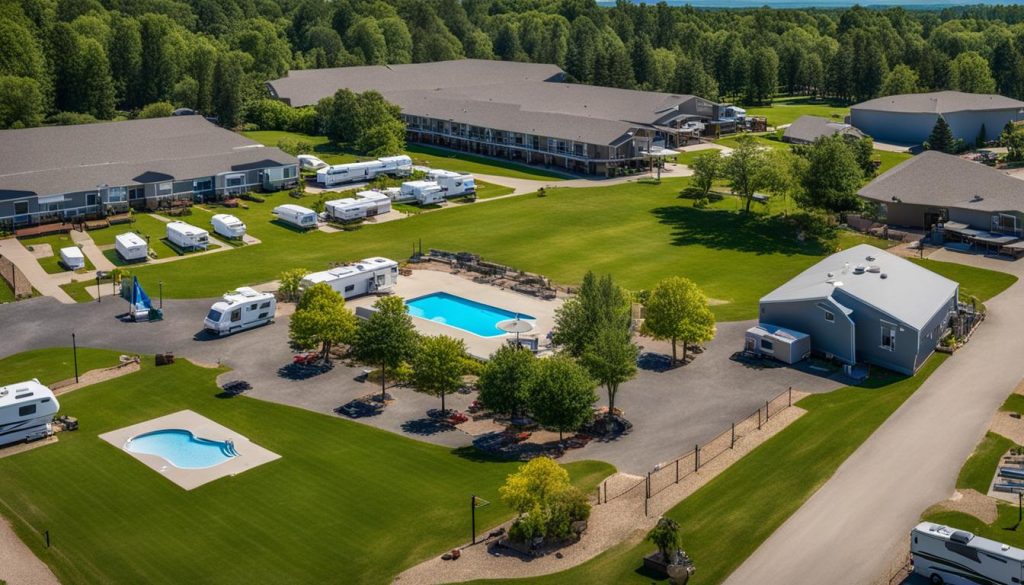
Essential Steps and Considerations for Starting a Campground
If you’re considering campground ownership, there are several essential steps and considerations to keep in mind. First and foremost, you need to decide whether you want to buy an existing campground or start a new one from scratch. This decision will impact your initial investment and the level of work required.
Next, choosing the right location is critical to the success of your campground. Factors such as weather conditions, seasonality, the local market, and competition should all be carefully evaluated. Conduct thorough research to ensure your chosen location meets the needs and interests of your target audience.
Creating a comprehensive business plan is a crucial step in securing funding and planning for success. Outline your campground’s vision, target market, marketing strategies, and financial projections. This will help you attract investors or secure a loan to cover the necessary expenses.
In addition to the business plan, researching the region is vital. You need to familiarize yourself with local regulations, permits, and infrastructure requirements. Building community relationships is also important as it helps establish a positive reputation and can lead to valuable partnerships.
To reach your target audience effectively, creating a professional website and implementing software solutions is necessary. An online presence will allow potential customers to discover and learn more about your campground. When it comes to marketing, employing effective strategies to promote your campground locally and online is crucial for attracting guests.
Last but not least, hiring a capable staff and providing excellent customer service are essential for running a successful campground. Your staff should be knowledgeable, friendly, and attentive to ensure a positive experience for your guests. By prioritizing customer satisfaction, you can build a loyal customer base and boost your campground’s reputation.
FAQ
How do I start an RV park?
Starting an RV park involves six main steps: research, create a business plan, acquire land, obtain permits and insurance, develop the land, hire personnel, and implement effective marketing strategies.
What is the difference between RV parks and mobile home parks?
RV parks are designed for short-term stays and high turnover, while mobile home parks cater to long-term residents. RV parks offer amenities to attract guests, while mobile home parks usually have lower development and operational costs.
What should be included in a comprehensive RV park business plan?
A comprehensive RV park business plan should include financial projections, a competitive analysis, RV industry statistics, tenant leasing agreements, and a showcase of the amenities your park offers.
How much does it cost to start an RV park?
RV park startup costs include land purchase, development costs, building RV sites, and septic system installation. Costs can vary depending on factors such as location and amenities offered.
What are the essential aspects of designing and running an RV park?
Essential aspects of designing and running an RV park include choosing the right plot of land, designing campsite layouts with necessary hookups, providing level parking pads and well-designed roads, offering sanitary facilities, and considering additional amenities.
What are the essential steps and considerations for starting a campground?
Essential steps for starting a campground include choosing the type of park, pinpointing the location, creating a business plan, securing funding, researching the region and obtaining necessary permits, building community relationships, creating a website and software, implementing effective marketing strategies, and hiring staff.

